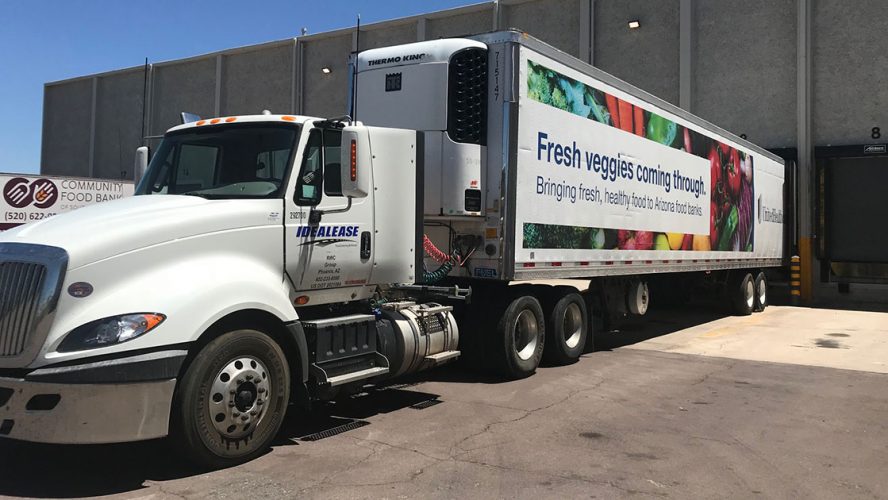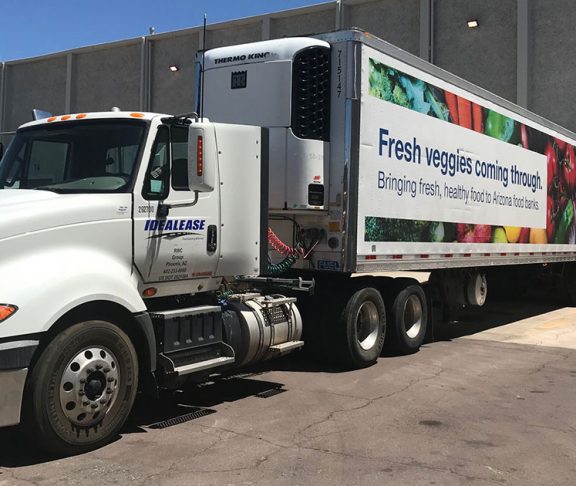Food banks across the country are changing their approach to getting food to communities and helping the millions of Americans struggling to feed their families fresh, healthy foods.
According to the U.S. Department of Agriculture, about 40 million households in America are “food insecure” or live in what are known as “food deserts.”
“Food deserts are low-income areas where a third of residents don’t have access to fresh, healthy food,” says Dr. Nicole Cooper, vice president of social responsibility at UnitedHealthcare. “Many people living in struggling communities need food banks and pantries to feed their families.”
Food deserts
Food deserts are a growing problem linked to the economy, according to Lisa Hamler-Fugitt, executive director of the Ohio Association of Food Banks. “When household incomes decline, poverty increases and local full-service grocery stores close.”
The problem is nationwide. Michael Griffin, president and CEO of Daughters of Charity Health Centers in New Orleans, Louisiana, serves many patients who reside in food deserts and sees the effects daily. “Eighty percent of what affects a person’s health is not necessarily healthcare itself — it’s insufficient housing and their environment, it’s the food they eat every day.”
“Medical care is only one part of a person’s overall health and well-being,” Cooper agrees. “This is why we are establishing national and local public-private partnerships to invest in the health of the whole person, including safe and affordable housing, reliable transportation, and locally trained community health workers. And putting healthy food in the hands of people who are in the most vulnerable of situations is part of UnitedHealthcare’s larger Empowering Health commitment.”
Food banks can help, but the problem isn’t always a lack of food, but a lack of healthy food. “Food banks are a critical, trusted source of emergency food access,” notes Cooper, “but much of the food donated to food banks is non-perishable processed and canned food that can be easily stored for long periods of time, which is not the most nutritious food to eat regularly.” This can have a profound effect on health. “A diet lacking nutritious foods plays a significant role in higher rates of chronic diseases like obesity, diabetes, and heart disease.”
Even when fresh produce, meat, or dairy is available to be donated to food banks, they sometimes have to turn it down for lack of proper storage or distribution capabilities.
Fresh ideas
Griffin fully understands the problem. “Part of what’s broken in our food infrastructure is just the cost of eating healthier,” he says. “Rapid distribution of fresh food can be costly. Rethinking the distribution channel to get fresh food to a community is something that should and can be done.”
“Food banks across the nation have been transitioning for more than a decade from distributing ‛shelf-stable’ foods to distributing more fresh food,” says Hamler-Fugitt. “We work with farmers, growers, and commodity producers to purchase their surplus ‛cosmetically challenged’ fruits and vegetables.”
But connecting those sources of fresh food to food banks has long been an issue. That’s where private sector innovation has been crucial. “State-wide investments from UnitedHealthcare have permitted us to expand the infrastructure of our largely nonprofit and faith-based partners through the purchases of refrigeration, coolers, and trucks needed to rapidly move highly perishable foods into communities that need it the most,” says Hamler-Fugitt. “We are connecting food producers to the people and communities that need healthy, wholesome food the most.”
Griffin notes that a major barrier to patients at Daughters of Charity Health Centers attaining better health surrounds their lack of daily access to healthy food, which the center has begun tackling. “We’ve hired and trained community health navigators, via an investment from UnitedHealthcare, who screen and assist the underserved with acquiring healthy food through the assistance of various community partners.”
This alliance of corporations, community organizations, and local government is having tremendous impact. “It takes all of us to fight food insecurity,” says Cooper. “If we all work together, we can change lives.”
Jeff Somers, [email protected]


